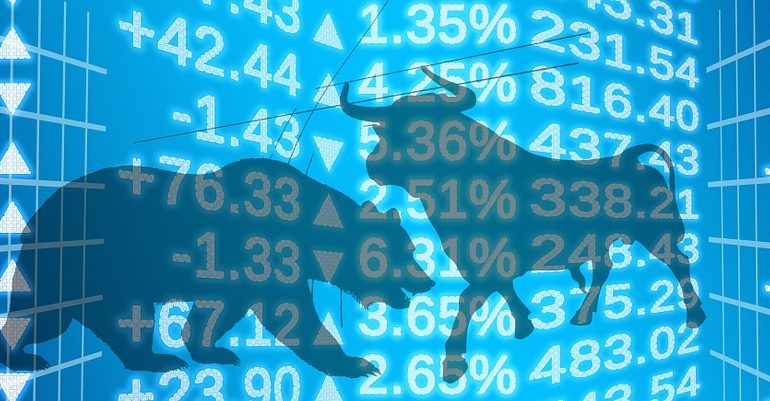Last Updated on Dec 14, 2022 by Anjali Chourasiya
“Be fearful when others are greedy and greedy when others are fearful” – An investing principle Warren Buffet practises religiously. It is a decision coupled with logic. However, emotions also play a vital role in stock investing. There is a ‘market mood’, which is a fear and greed index. But how do you determine the market mood? Well, we have a solution. At Tickertape, we have built a Market Mood Index (MMI) for you. In this article, let’s dive deeper into it.
Table of Contents
What is market sentiment?
The overall mood and attitude of investors towards a particular security or financial market are referred to as market sentiment. It is the crowd psychology, a feeling or tone of the market. It can be understood in terms of fear and greed or bullish and bearish.
Market mood is determined mainly through the activity and price movement of the securities traded in the market and through various other factors like policy changes, management behaviour, natural disasters, or any macroeconomic factor.
Why is analysing market mood important?
Market mood influences the technical indicators, which are used to measure short-term price movements in the market. These price movements are usually a result of the attitudes of investors regarding the market. Hence, the analysis of market sentiment helps in determining the collective opinion of investors regarding certain assets.
Need for Market Mood Index
Let’s assume there is a stock where price increases, and you try to invest in it without analysing the company. This can be due to the fear of missing out (FOMO). In such cases, we might have seen that after investing, the stock prices start coming down, entering the bear market, which can turn out to be a loss for the investor.
For example, you are buying 10 stocks for Rs. 100. But after you buy, the stock price drops. In this case, out of fear, selling all 10 stocks for Rs. 70 is a loss. This is because you didn’t know the right time to invest in the market and got driven by the market movements.
This problem can be overcome by Tickertape’s Market Mood Index, a tool that can help you time your investments better.
Market Mood Index
Tickertape’s Market Mood Index is a market mood indicator. It tracks the market sentiment – the attitude of investors towards the overall stock market or a specific stock. This sentiment analysis works along the lines of the law of demand and supply. Keeping the supply constant, when the demand for a commodity rises, its price also increases. But when the demand decreases, the price falls.
Stock prices are heavily driven by two emotions, namely greed and fear.
- A positive outlook on the market or a stock makes investors greedy and drives them to buy more stocks, which shoots the prices.
- Fear, on the other hand, is usually the outcome of bad news. This forces investors to sell stocks and thus brings down the prices.
Hence, Tickertape’s Market Mood Index puts out the market sentiment in terms of fear and greed. Such an analysis of investor sentiment is considered to be one of the most reliable methods to time the entry and exit points in stock investing. The entry point is when you buy a stock, and the exit point is when you sell it.
That said, the selling price minus buying price is profit or loss. Ergo, smart plotting of entry and exit points is crucial to streamline your investment plan.
The 4 Zones of the Market Mood Index
MMI puts out the market sentiment in 4 emotional zones: Extreme Fear, Fear, Greed, and Extreme Greed. The MMI index varies for each of them. Let’s understand each of them.
Extreme Fear Zone: Index less than 20
This zone indicates that the market is suffering, and so many investors are liquidating their stocks. An oversold market is a good time to buy stocks as they may be available at lower prices.
Fear Zone: Index ranges between 30 and 50
This zone shows that the market is reeling but based on the MMI trajectory*, you can infer whether the market is doing better or worse. If the MMI is in the Fear Zone and economic development further dampens investor sentiment, then the market can slip further down, pushing the MMI into the Extreme Fear Zone.
For instance, if you remember, the stock market rallied when there was news of COVID-19 cases decreasing globally. This news boosted investor sentiment. And so, depending on further developments and the trajectory at the time, the MMI may have either moved from
- Fear Zone to Extreme Fear Zone
- Fear Zone to Greed Zone
So, when in the Fear Zone, it is best to wait till the MMI jumps to the Greed Zone before selling your stocks. But if the Fear Zone moves to Extreme Fear Zone and you’re afraid that the way forward is even worse, you could sell your stocks to stop your losses.
*Trajectory means the trend that the MMI follows.
Greed Zone: Index ranges from 50 to 70
This zone suggests that the market is doing well, and as a result, investors are greedy. When the MMI is in this zone, the market is said to be in the overbought area. Similar to when in the Fear Zone, here it is good to watch the MMI trajectory before entering or exiting the market.
Let us understand the mechanism with an example. Whenever COVID-19 cases rose after dipping for a bit, investors turned extremely cautious and liquidated their stocks. In this case, there are two possible trajectories of the MMI, depending on its current zone:
- Greed Zone to Extreme Greed Zone
- Greed Zone to Fear Zone
If the MMI is in the Greed Zone, it is best to wait till it falls into the Fear or Extreme Fear Zone before buying stocks. But if the MMI moves to an Extreme Greed Zone, it indicates that the market is in an overbought zone and stocks are expensive. Ergo, buying new stocks is best postponed.
Extreme Greed Zone: Index is over 70
This zone suggests that the stock market is extremely overbought. A good thing to do in this case is to wait for the market to stabilise before buying new stocks.
6 fundamental factors of MMI
The MMI tool is built based on the 6 fundamental factors that influence investor sentiment. Let’s look at each one of them in detail.
FII Activity in India
FII stands for Foreign Institutional Investors, international companies that invest in Indian stock markets. Markets perform well when the inflow of FIIs is more than the outflow. In other words, higher FII brings more funds to the economy, boosting investor sentiment. At such a time, the MMI is in the Greed Zone. But when there is an exodus of FIIs from domestic markets, investor sentiment dampens, and MMI gets in the Fear zone.
Volatility and Skew
The market is said to be volatile if benchmark indices fluctuate frequently. One of the ways to measure volatility is the India VIX index, which indicates the market volatility expected to prevail over the next 30 calendar days. The higher the VIX index, the higher the volatility in the stock market. But knowing the direction of volatility is equally important to analyse markets better.
Enter Skew, which shows the direction in which the market is expected to move. A high average value of Skew indicates that the market could move downwards. In terms of MMI, a higher value of Skew suggests that the MMI would slide into the Fear Zones, whereas a lower Skew suggests that the MMI would move into Greed Zones.
Momentum
In stock markets, momentum indicates the movement of the market or stock from a current point. Momentum can be calculated using various methods, including the exponential moving averages of Nifty. A positive exponential moving average indicates a bull market. Ergo, the MMI enters Greed Zones. In contrast, a negative exponential moving average signifies a bear market, and as a result, the MMI slides into Fear Zones.
Market Breadth
Market Breadth tracks the number of stocks moving upward compared to those that are declining. If more stocks are moving upwards instead of downwards, market breadth is said to be positive. This indicates that the broader market is performing well. Negative market breadth is when more stocks move downwards, suggesting that the broader markets and economy are suffering. Market Breadth is calculated using the Modified Arms Index; the lower the index, the stronger the market, and vice versa.
Price Strength
This measures how strongly a stock market is heading towards a bullish or a bearish direction. The difference between % of stocks that are near their 52-week low and the % of stocks near their 52-week high is the price strength. A positive or high price strength means a bullish market, and a negative or low price strength signifies a bearish market.
Demand for Gold
Higher demand for gold signifies that investors are wary of entering stock markets, pushing the MMI into Fear Zones. In contrast, lower demand for gold indicates that the stock markets are faring relatively well, pushing the MMI into Greed Zones.
MMI is 93.75% accurate
We take delight in the fact that MMI has been back-tested and found to be 93.75% accurate in predicting market top- and bottom-outs. So why not start using MMI to empower your investments? While the MMI is FREE, you will need to upgrade to Tickertape Pro membership to download the historical MMI trajectory for a deeper stock market analysis.
To conclude
Though several fundamental and technical factors are considered before investing, market sentiment can give us insights into where the market or a particular security is moving. However, note that Market Mood Index is not a trade recommendation tool but only a device to aid in better timing the market. Sign up today to explore the MMI, Tickertape’s loved feature ?
FAQs
What is the market sentiment today?
Similar to the stock market, the sentiments also keep changing. You can check the prevalent market sentiment on Tickertape’s Market Mood Index.
What is the market mood index in India?
The market mood index indicates the current emotions of the investors or traders towards the stock market. It helps in determining the right time to invest in the market.
What are market sentiment indicators in India?
Market sentiments can be analysed using several indicators. Some of the important indicators are – VIX, high-low index, market breadth, momentum, FII and demand for gold.
How to find market sentiment?
To understand the market mood, go to Tickertape’s Market Mood Index. It is a tool that can help you time your investments better. It puts out the market sentiment in terms of fear and greed.
- List of Best Arbitrage Funds in India (2025) - Apr 28, 2025
- Best Flexi-Cap Mutual Funds in India (2025) - Apr 25, 2025
- List of Best ELSS Mutual Funds in India (2025) - Apr 25, 2025




